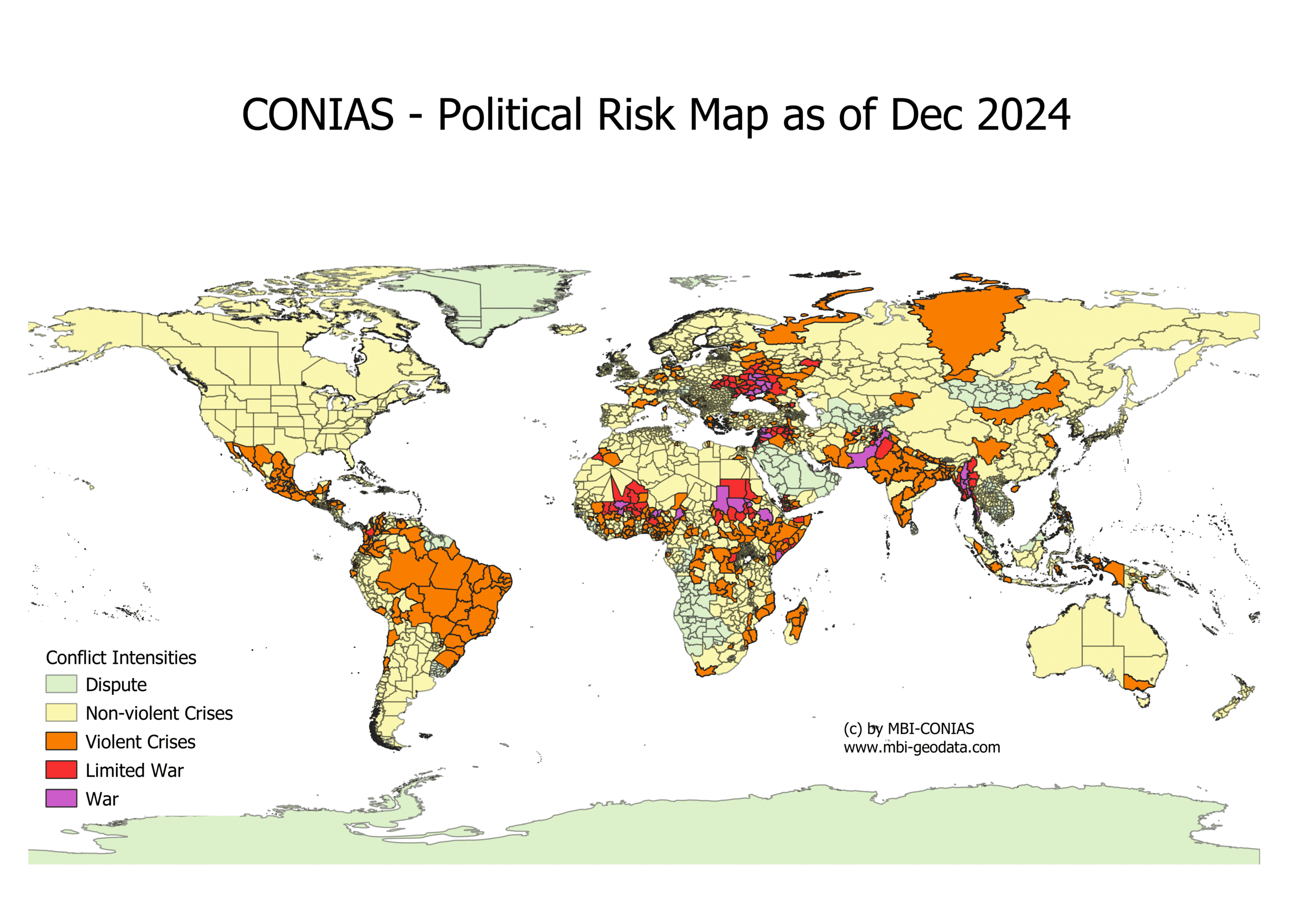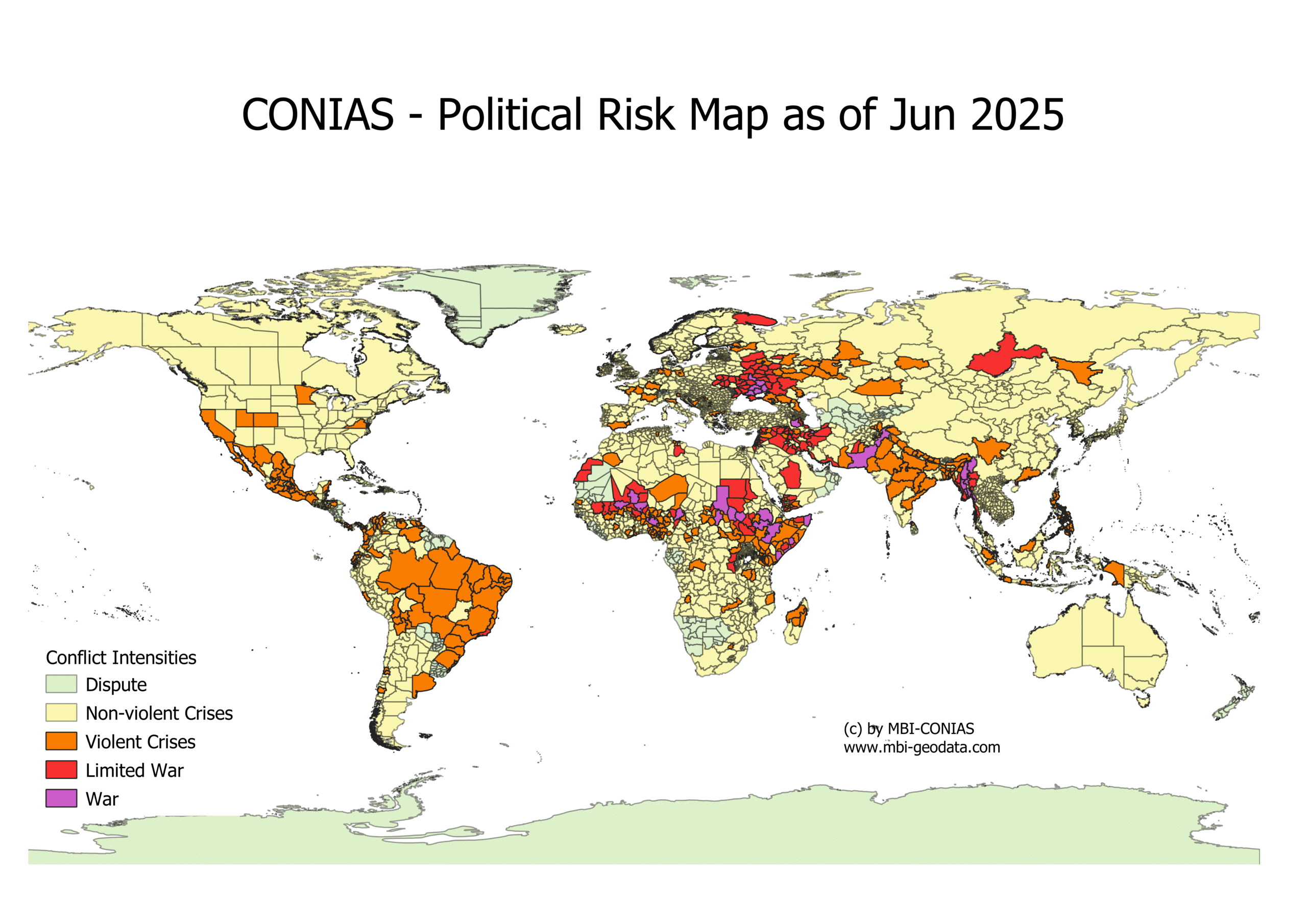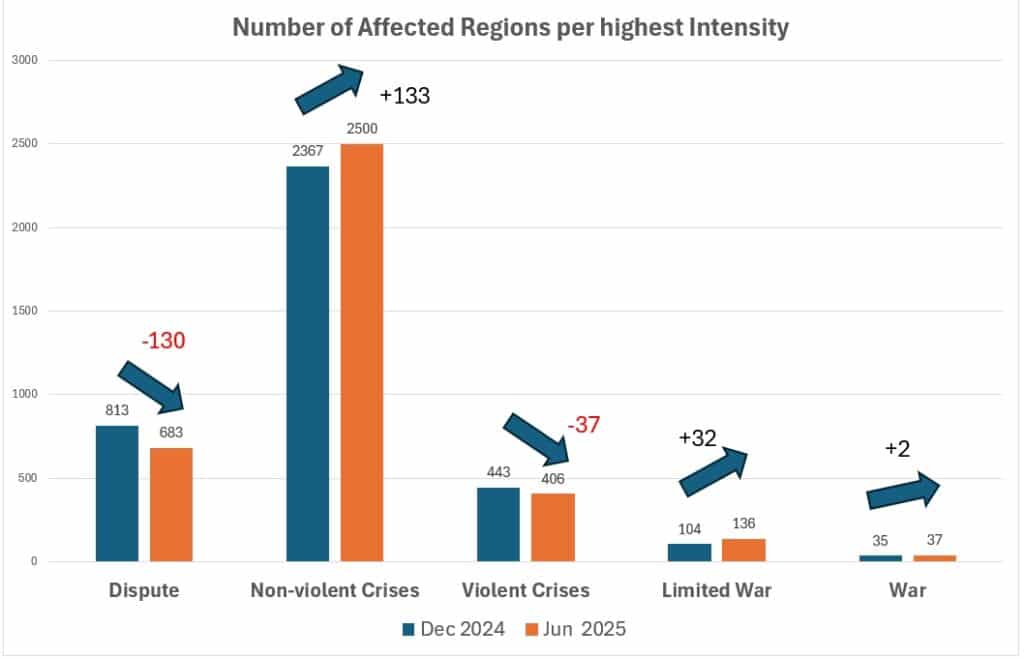CONIAS Risk Data | News
Is Political Violence Continuing to Spread?
08/19/2025
The first half of 2025 was, at least in the media, dominated by the escalating conflicts between Russia and Ukraine as well as in the Middle East. Reports of missile strikes, destroyed cities, and rising casualties are coming from an increasing number of regions. But what does a systematic comparison of the global conflict situation at the beginning of the year (December 31, 2024) and mid-year (June 30, 2025) reveal?


Key Findings
- The number of regions affected by political violence in June 2025 is slightly lower than at the beginning of the year.
- However, the intensity of violence in the affected regions has increased. Overall, there is more political violence than in January.
- In around 876 of the 3,762 examined subnational units – roughly one quarter – the level of intensity has changed since the start of the year. This underlines the enormous dynamism of political crises.
About 15% of Regions Worldwide Show Political Violence
Despite the escalation between Iran and Israel and Ukraine’s surprising drone strikes deep into Russian territory, the total number of affected regions worldwide has remained unchanged. Around 15% of the analyzed regions show political violence, while 85% do not.
Yet this seemingly stable figure is misleading: more and more regions are not (yet) acutely affected, but show clear warning signs such as troop deployments, threats, or economic coercive measures. The potential spread of violence therefore represents a growing risk.

Warning Signal: Rising Levels of Warfare
Two developments stand out:
- The number of regions with sporadic violence has decreased.
- At the same time, the number of regions experiencing warfare (“limited war”) has risen significantly.
The qualitative difference is considerable: while “violent crises” can also be fought with comparatively limited means, a “limited war” requires large numbers of combatants or highly complex weapons systems. The fact that more and more conflicts are crossing this threshold is a serious warning signal. There is a growing willingness to view war once again as a political instrument.
Nearly 200 New Regions Affected
In 197 regions that were still peaceful at the beginning of the year, violence broke out by June 2025, in some cases at the level of war. Particularly affected: parts of Iran and Russia. But the United States also experienced isolated violent incidents, for example in connection with the “No-Kings” protests. In total, new areas of violence emerged across 70 countries.
Conclusion: Dynamics Matter More Than Absolute Numbers
The total number of regions affected by violence remains high, but nearly unchanged. However, looking only at these absolute figures obscures the real dynamics: around 1,400 ongoing political conflicts are continuously shifting in intensity, geographic spread, and level of threat.
For companies, banks, and insurers, this means: single assessments at the beginning or end of the year are not sufficient. Political risks must be monitored continuously and managed actively in order to be prepared for escalation.
The MBI CONIAS Conflict Database provides the necessary foundation – offering global coverage not only of violent conflicts but also of those that are currently non-violent yet show a high risk of escalation.
Contact us if you want to identify and effectively manage political risks for your business at an early stage.
About the author

Dr. Nicolas Schwank
Chief Data Scientist Political Risk
Michael Bauer International GmbH